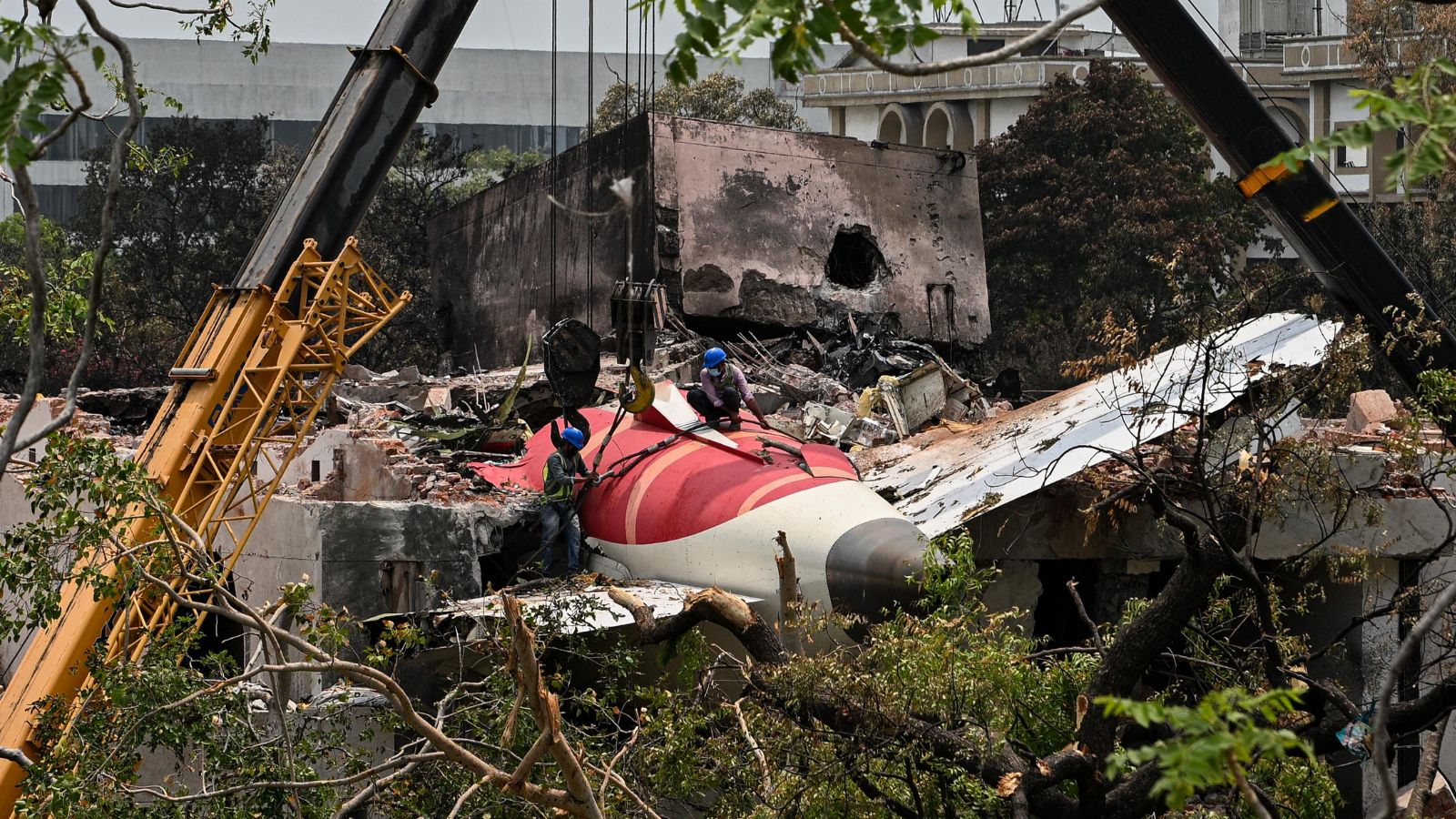The black boxes of the ill-fated Air India Boeing 787-8 aircraft that crashed in Ahmedabad on Thursday may be decoded and analysed by the Air Accident Investigation Bureau (AAIB) at its brand new state-of-the-art laboratory that was inaugurated just two months ago, The Indian Express has learnt. Sources indicated that the decision on whether the black boxes—digital flight data recorder (DFDR) and cockpit voice recorder (CVR)—will be analysed in India or sent to an overseas facility will be taken by the AAIB based on critical criteria like the physical condition of the black boxes and the extent of data analysis that may be required for the investigation.
So far, the DFDR of the crashed aircraft has been recovered from the crash site, but its exact condition and whether it suffered any major damage has not been revealed by the AAIB or the government. Meanwhile, the search for the CVR is still on. The new lab, inaugurated on April 9 at the AAIB’s office in Delhi, was established with an investment of Rs 9 crore. The black boxes of the Air India plane might well be the first real test of the facility.
“It will depend on the condition of the DFDR and the CVR. The investigators will have to ascertain the absolute integrity of the black boxes, and if they are confident about it, they would like to analyse them at the new lab instead of sending it to an overseas facility,” said a source.
“The new lab is a world-class facility but there are highly specialised labs in a few countries that may be superior. If the investigators feel that the DFDR or the CVR are not in a state that the AAIB lab can handle, or if the extent of data analysis that they require for the probe is beyond its capability, then they might decide to send it to an even more advanced facility, most likely in the US as the aircraft involved was a Boeing plane,” said another source.
The new and advanced lab, built by support of government-owned Hindustan Aeronautics Ltd (HAL), has enhanced the AAIB ability to repair damaged black boxes, retrieve data, and conduct thorough analyses of accidents with high accuracy. Earlier, a black box lab under the aviation safety regulator Directorate General of Civil Aviation (DGCA) was being used by the AAIB, but the facility was old and lacked the a few key capabilities needed for thorough and accurate data retrieval and analysis, said a source. That was one of the reasons why a nuber of black boxes from aircraft involved in serious accidents were sent to overseas labs, said a source.
“The establishment of this lab, built to international standards and comparable to those of developed nations, fulfills India’s obligations as an ICAO (International Civil Aviation Organization) member state,” the Ministry of Civil Aviation had said in a release when the lab was inaugurated in April.
Thursday’s crash claimed the lives of 241 of 242 people on board the plane that was operating Air India flight AI-171 from Ahmedabad to London Gatwick. Lives were also lost on the ground as the plane crashed into a medical college hostel close to the Ahmedabad airport. This is the first wide-body crash for an Indian airline in four decades. It is also the first crash of a Boeing 787 globally. Both the black boxes are expected to play a critical role in the air crash investigation.
Story continues below this ad
The purpose of the DFDR is to record flight data on numerous parameters of aircraft operations, while the CVR records the flight crew’s voices, as well as other sounds inside the cockpit, including engine noise, stall warnings, landing gear extension and retraction, and other clicks and pops. Communications with air traffic control, automated radio weather briefings, and conversation between the pilots and ground or cabin crew are also recorded.
With the data retrieved from the DFDR, investigators can generate a computer animated video reconstruction of the flight. The investigators can then visualise the aircraft’s attitude, instrument readings, power settings, and other characteristics of the flight. This animation enables the investigating team to visualise the last moments of the flight before the accident.
“Both the Flight Data Recorder and the Cockpit Voice Recorder have proven to be valuable tools in the accident investigation process. They can provide information that may be difficult or impossible to obtain by other means. When used in conjunction with other information gained in the investigation, the recorders are playing an ever-increasing role in determining the Probable Cause of an aircraft accident,” the US National Transportation Safety Board (NTSB) says on its website.
“The FDR on board the aircraft records many different operating conditions of the flight. By regulation, newly manufactured aircraft must monitor at least eighty-eight important parameters such as time, altitude, airspeed, heading, and aircraft attitude. In addition, some FDRs can record the status of more than 1,000 other in-flight characteristics that can aid in the investigation. The items monitored can be anything from flap position to auto-pilot mode or even smoke alarms,” the NTSB states.
Story continues below this ad
The AAIB is undertaking the air crash investigation, while the NTSB would also be involved in the detailed probe, given that the aircraft is manufactured by an American company—Boeing. A UK AAIB team is also going to help with the investigation, and so are Boeing and other major component manufacturers like GE (engine manufacturer). According to aircraft accident investigation protocol, the probe report should be finalised within a year.


